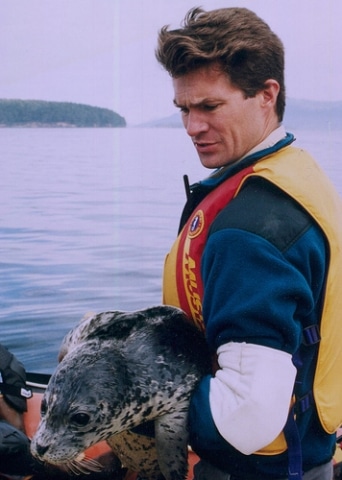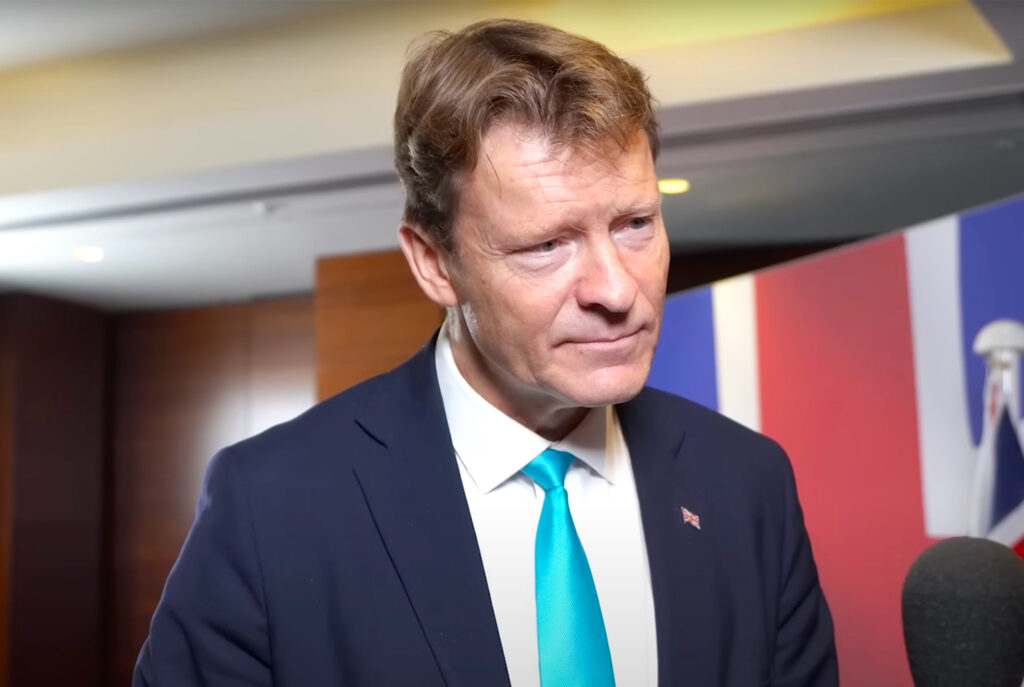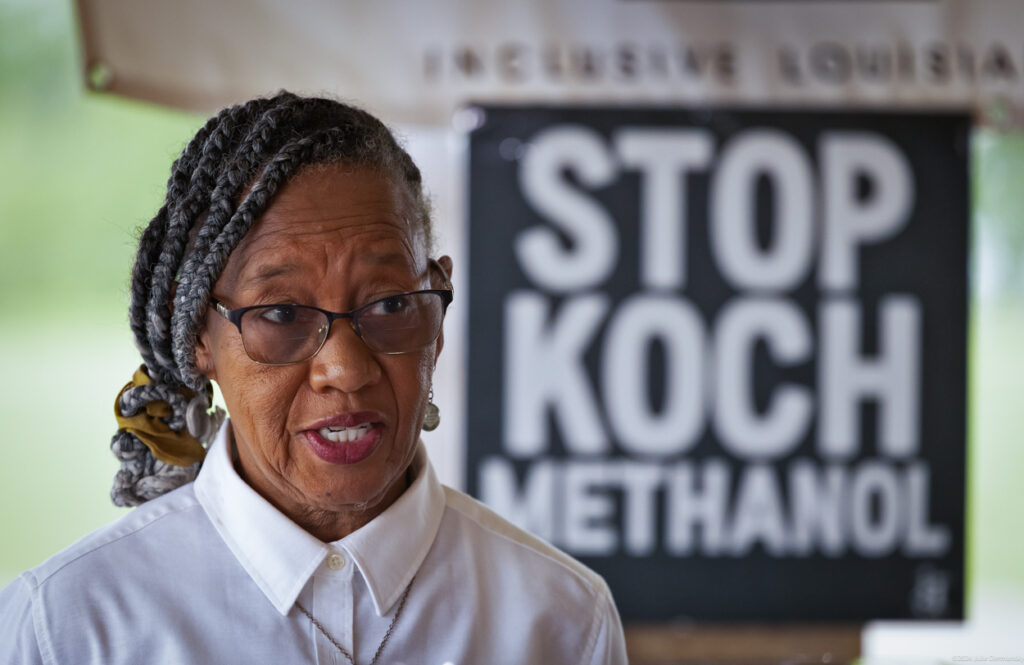On April 1, 2013 Canada will lose its sole marine contaminants research program. The loss comes as a part of a massive dismantling of science programs at the Department of Fisheries and Oceans announced in May of 2012.
Peter Ross, lead researcher at Vancouver Island’s Institute for Ocean Sciences, is a recent casualty of the sweeping science cuts moving across the country.
In this second installment of DeSmog Canada’s interview with Ross, he discusses the importance of the scientific method as a bulwark against bias in policy-making, the danger of industrial pollutants in marine habitats, and what killer whales can tell us about our society.
Ross also talks about why science plays an essential role in understanding what our environments are telling us. Science gives us the ability to gauge our environmental impact and, importantly, how to alleviate that impact. If we wait for our iconic species to be the ‘canary in the coalmine’ for our increasingly industrialized society, we have commit ourselves to a losing battle.
As Ross says: “If we’re going to wait for the caribou to die, or for the killer whales to die, to save ourselves, then I would argue it’s too late, because those animals … are not going to give us advance warning of a looming threat to humans, they’re going to tell us it’s too late.”
For Part 1 of the interview, click here.

Carol Linnitt: How would you describe the relationship between science and democracy, and how policy development can be the tool that bridges the gap between scientific research and maintaining democratic institutions that represent a broad spectrum of interests?
Peter Ross: That’s a tough one. There are all sorts of different levels of science, but the scientific method is something that helps to remove the bias from our ability to observe things that are going on. In other words, as a scientist you are constantly checking yourself to make sure that what you are doing is objective, is defensible, is reproducible. Any study that we carry out gets subject to peer review before it is accepted in a journal. When you’re looking through the lens of the scientific method, you’re trying to be as objective as possible, and it’s only then that we as scientists feel comfortable in providing advice to policy makers or managers.
In other words, when we talk about science-based advice, it means it’s defensible, it’s rational, it’s based on peer-reviewed evidence, it’s based on statistically-defensible study design. It has withstood critical peer review so that it’s the best we’ve got in terms of delivering advice to policy makers. Are you going to, as a policy maker, decide what kind of science needs to be done to suit your needs, or are you going to listen to science that’s telling you, “This is the way it is”? If we look at the way that our civilization has grown over the last 150 to 200 years, there’s little question that science and the peer review process have helped us to reap incredible socio-economic and public health benefits that really very few could argue with. And if you’re going to turn off that input, then you’re going to turn off the taps of science [that examines] the application of technology that you have selected. You run the risk of diminishing the role that science plays in contributing to the public good today and tomorrow.
CL: To the extent that there has been a reduction in scientific research and funding geared towards federal scientific bodies, do you see an influx of something else taking its place? The government’s line is that the budget cuts affecting science programs are aimed at reducing deficits. Do you see something else gaining priority in Canadian federal politics and taking the place of science?
PR: Not really. It’s as simple as this: we make choices in terms of fiscal approaches to government operations. If you cut one thing, you’re making a decision to terminate or reduce the scope of that work. If you’re increasing funding for something else then you’re also making a decision. At the end of the day you’ve got to stand by the collective mosaic that results from those decisions. If someone is saying that we have to cut 5% from every department, that’s one thing. But when you turn around and cut 100% of a program, to me that indicates something more than fiscal restraint. It argues in favour of a targeted reduction of a program for some other reason. All of these cuts are by choice. We can all appreciate tightening the belt, but if you’re completely terminating one program then you’re targeting that program. Period. And that program is what we are going to lose.
CL: So what’s the future for the Institute for Ocean Sciences?
PR: Well the Institute for Ocean Sciences is still here. There are about 300 people that work here on ocean productivity, ocean currents, hydrography and some aspects of food web structure. But there will be no more marine pollution or monitoring here on the coast.
CL: That’s devastating to hear. What does your future look like?
PR: Tough one. I just don’t know. I’ve been so focused trying to finish my job here. As you might imagine, when you spend 15 years setting up a laboratory, you accumulate a lot of data. We’ve got some graduate students. We have some papers and manuscripts that are in various stages of being published, so I’ve been really focused at trying my best to make sure that when I close my office door for the last time things aren’t going to be left behind, but are delivered to the public and to the international scientific community, so that everything we have worked on thus far is protected. I’ve been pondering the job scene, but it’s a little difficult when you’re a scientist, because you’ve got to figure out whether you try to re-launch your laboratory and continue to do the kind of work that you have been doing, and that took 15 years to set up. It’s going to be very difficult to walk into another agency and say, “Here I am, and I’d like to have a laboratory that’ll do this, that and the other.”
So I come with a little bit of baggage. I’m just hoping that something might emerge here in British Columbia so that I can continue to do this work. What we do is important not only in British Columbia. We work very closely with communities in the far North and the Arctic, and on the East Coast. We work across the border with colleagues in Washington and California, and we work in other countries. Many people in many different countries have watched a lot of what we’ve been doing. We have an international reputation. We have been working on things that are new and exciting, new techniques, new methods. We have seen some of our study designs help us understand the conservation implications of pollutants for endangered species, such as southern resident killer whales. So this sort of information is of interest not only to the scientific world, but it’s been sought by some policy makers, managers, regulators, conservationists, and of course, members of the public. So hopefully something will emerge that works. In the meantime I’m doing my duty while applying for jobs in other parts of the world.
CL: I have read that your research has discovered that killer whales had a contaminant load higher than any other marine mammals.
PR: Yes.
CL: So are these industrial related pollutants for the most part?
PR: Yes. These were PCBs, the polychlorinated biphenyls. They were banned in Canada in 1976. They are very persistent, heat resistant, thick oils that we used to see in transformers for the electric industry and some other applications. But they’re still around, and they’re a real problem at the top of the food chain because they bio-magnify in food webs, and we can’t get rid of them from our bodies very easily. We were working with colleagues here in the laboratory and also in the field to get biopsies from free ranging killer whales. We got biopsies from 47 animals. It’s in the blubber that we find these sorts of chemicals, and we’re not only able to measure the chemicals in that blubber, but we’re able to relate it to their age, their sex and their feeding ecology.
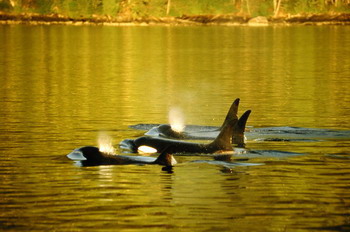
We had a very strong insight into what it meant in terms of the biology of the animal and that was very, very important. We published that story twelve years ago now. That was the publication that showed that the transient killer whales and the southern resident killer whales were essentially the most PCB-contaminated marine mammals on the planet. Transient killer whales had three times higher level than the beluga whales in the Saint Lawrence. Until that, those beluga were thought to be the most contaminated. That story had resonance internationally and here in the region. We quickly set about trying to figure out why they were so contaminated, and whether it was affecting their health. Over the last twelve years our work has helped to answer a lot of those questions.
CL: When you’re look at the way that our social behaviour and industrial activity affect nature, do you feel this sort of research helps us gauge the successes and failures of society?
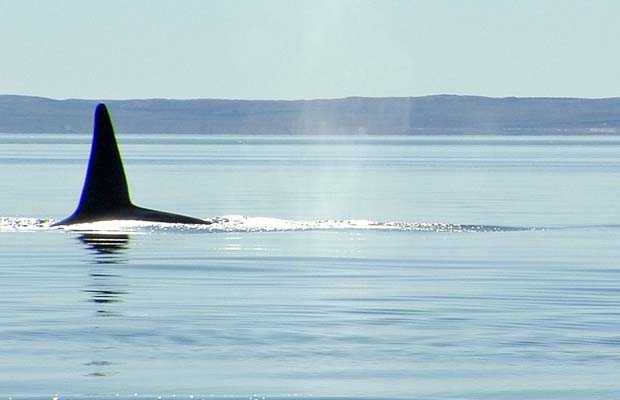
PR: Well there’s no question. There’s no industrial sector that would say, “Hey, that chemical that I produced has a benefit for killer whales.” None of these chemicals were designed to end up in killer whales. What killer whales are reminding us of are our mistakes. Our failures from a regulatory or a risk assessment stand point. Or maybe just a failure to pay attention and care about what’s happening in the oceans.
CL: That’s probably something a lot of scientists that work with specific species across Canada would agree with. I’ve spoken with scientists who are working on the rapid disappearance of caribou in Alberta. They say that caribou are the canary in the coalmine and help us understand the impacts of large industrial projects on the entire ecosystem.
PR: Well that’s right. But unfortunately there’s one problem with the canary in the coalmine analogy. Miners had to rely on the canary dying to warn them there was a problem with methane or carbon dioxide. In dying, the canary provided a warning for humans. If we’re going to wait for the caribou or the killer whales to die to save ourselves, then I would argue it’s too late. These animals have such important needs in terms of habitat, they are not going to give us advance warning of a looming threat to humans, they’re going to tell us it’s too late.
CL: Do you feel there’s room for progress in terms of marine contaminants, for example?
PR: Absolutely. You know it’s funny. A lot of people find our work troubling. I turn around say, “Well, maybe that’s the intent.” But at the same time, whenever we learn more about these things, or we conduct this sort of research, or we publish these studies, we’re identifying a problem. And once you identify the problem, you can enact a solution, whether it’s regulation, management, source control, changing a process or an activity, or improving the conduct of households, consumers and shoppers.
If we look back at a lot of the mistakes that we’ve made in the past – whether it was dioxins, PCBs, DDT or CFC‘s once we identify the problems, and that was through science, then we had management turn around and enact changes. What we see as we look back, is a problem emerge, be identified, and then gradually lessen as we made a decision to ban PCBs, DDT, CFCs or dioxins, or to regulate their release or production. Once we started doing this, we saw dramatic improvements in the health of marine mammals, sea birds, or fish-eating birds that were being affected by, for example, DDT. So yes, not always a nice story when you read about pollution. But at the same time, how else are you going to solve things and make a better environment for tomorrow?
CL: So, if we are pulling back from research that identifies problems, that means also we are not engaging in solutions, because the two go hand in hand?
PR: We won’t be able to define our solutions because we won’t know what the problems are, yes. That’s basically it.
Image Credits: Photo of Peter Ross by Lizzy Mos, used with permission. Orca photos courtesy of Department of Fisheries and Oceans Canada.
Subscribe to our newsletter
Stay up to date with DeSmog news and alerts


